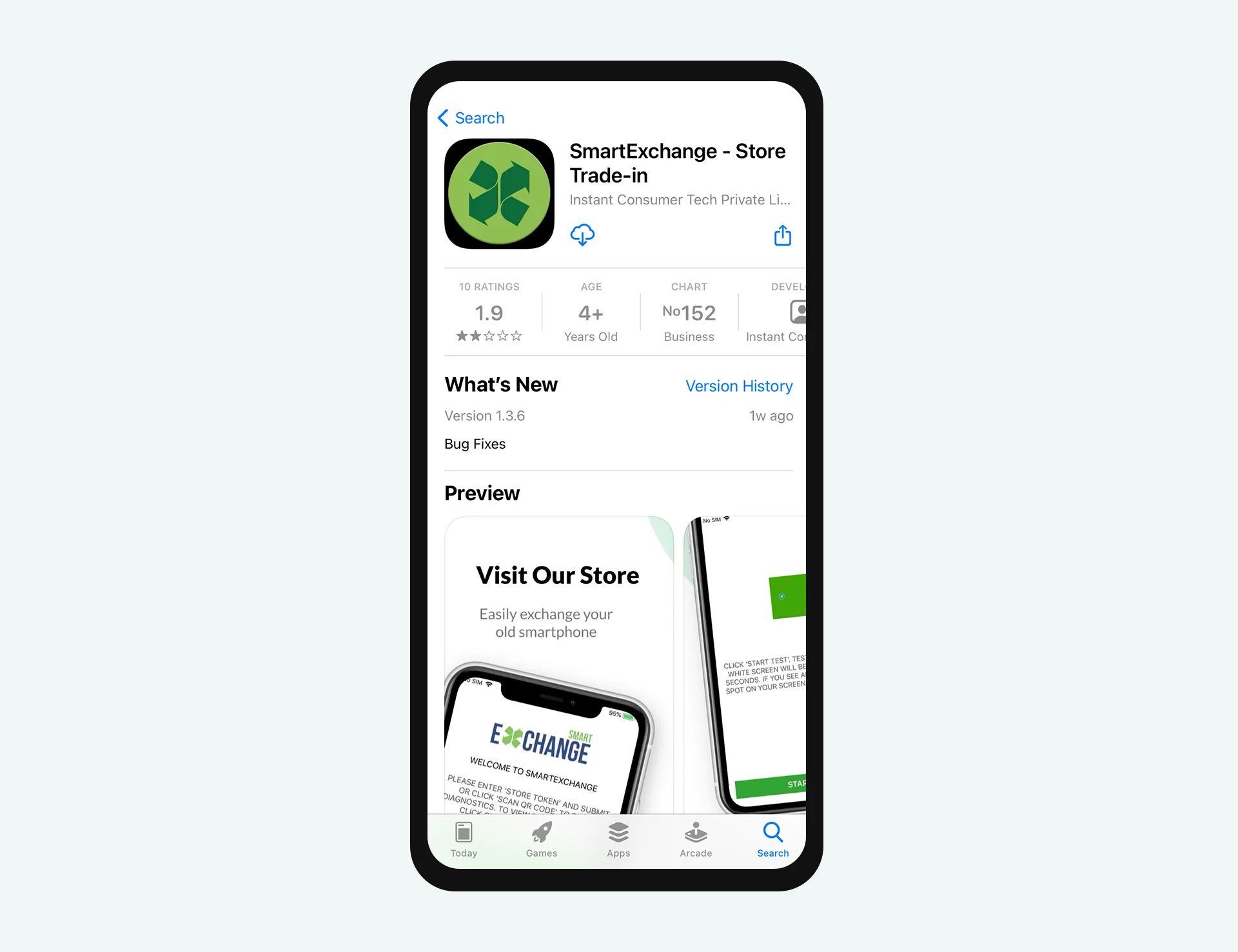Introduction
Retail trading, also known as individual trading or individual investing, refers to the buying and selling of financial instruments, such as stocks, bonds, commodities, and currencies, by individuals rather than institutions. It has become increasingly popular in recent years, thanks to advancements in technology and the accessibility of online trading platforms.
Unlike institutional investors, who trade on behalf of large organizations or funds, retail traders are individual investors who trade with their own capital. This form of trading allows individuals to participate in the financial markets and potentially profit from price fluctuations. It offers a level playing field for individual investors to compete with institutional traders and take advantage of market opportunities.
The rise in retail trading can be attributed to several factors. Firstly, the internet and advancements in technology have made it easier for individuals to access real-time market data, research tools, and trading platforms. This has democratized trading, allowing anyone with an internet connection and a computer or smartphone to participate in the markets.
Furthermore, there is a growing interest in financial independence and the potential for significant returns on investment. Many individuals see retail trading as a means to build wealth, achieve financial goals, and attain a level of financial freedom. This desire to take control of their own finances, coupled with the availability of educational resources and mentorship programs, has fueled the popularity of retail trading.
Another factor driving the proliferation of retail trading is the low cost of entry. In the past, trading was predominantly limited to professional traders and institutions due to high transaction costs and minimum capital requirements. However, with the advent of online brokerages and discount brokerages, the barriers to entry have significantly decreased, making trading more accessible and affordable for individuals.
While retail trading offers various benefits, it is important to note that there are risks involved. The markets can be unpredictable and volatile, and inexperienced traders may experience losses. Therefore, it is crucial for individuals engaging in retail trading to have a solid understanding of market fundamentals, risk management strategies, and trading techniques.
In the following sections, we will delve deeper into the key characteristics of retail trading, explore the benefits and risks, discuss different types of retail trading, and provide insights into popular retail trading strategies. We will also examine the factors to consider and the common tools and platforms used in retail trading.
Definition of Retail Trading
Retail trading refers to the practice of buying and selling various financial instruments by individual investors, rather than professional traders or institutions. It offers individuals the opportunity to participate in the financial markets and potentially generate profits from price fluctuations. Retail traders typically trade with their own capital, using various trading strategies and tools.
Unlike institutional traders who have access to substantial resources, technology, and market insights, retail traders operate with limited resources and rely on their own knowledge and analysis. They often trade through online brokerage platforms, which provide them with access to real-time market data, research tools, and order placement facilities.
Retail trading encompasses a range of financial instruments, including stocks, bonds, options, futures, commodities, and currencies. Traders can choose to focus on a specific market or diversify their investments across multiple asset classes.
One key aspect of retail trading is that it allows individuals to trade with relatively smaller account sizes compared to institutional traders. This means that retail traders can start with a smaller amount of capital, making trading more accessible to a wider range of individuals.
Another characteristic of retail trading is the ability to take advantage of leverage. Leverage allows traders to control a larger position in the market with a smaller amount of capital. This amplifies both potential profits and losses, making proper risk management crucial for retail traders.
Furthermore, retail traders have the freedom to choose their own trading strategies. They can utilize technical analysis, fundamental analysis, or a combination of both to identify potential trading opportunities. They can also employ various trading tools, indicators, and chart patterns to assist them in making informed trading decisions.
Overall, retail trading offers individuals the opportunity to participate in the financial markets and potentially generate profits. It provides flexibility and control over one’s own trading decisions, allowing traders to tailor their strategies to their own preferences and risk tolerance levels.
In the following sections, we will explore the key characteristics of retail trading in more detail, discuss the benefits and risks involved, and provide insights into different types of retail trading and popular trading strategies.
Key Characteristics of Retail Trading
Retail trading has several key characteristics that distinguish it from institutional trading. Understanding these characteristics is essential for individuals who wish to engage in retail trading. Let’s explore some of the core aspects:
1. Accessibility: Retail trading has become increasingly accessible to individuals due to technological advancements and online trading platforms. With just a computer or smartphone and an internet connection, anyone can participate in the financial markets from anywhere in the world.
2. Lower Entry Barrier: Unlike institutional traders, who often require significant capital and resources, retail traders can start with smaller account sizes. This lower entry barrier allows more individuals to get involved in trading and potentially profit from market movements.
3. Flexibility and Control: Retail traders have the freedom to choose their own trading strategies, timeframes, and risk management techniques. They can adapt their approach based on market conditions and personal preferences, offering greater flexibility and control over their trading activities.
4. Range of Financial Instruments: Retail traders have access to a wide range of financial instruments, including stocks, bonds, commodities, currencies, and derivatives. This allows them to diversify their trading activities and take advantage of various market opportunities.
5. Leverage: Retail trading offers the opportunity to utilize leverage, which allows traders to control larger positions with a smaller amount of capital. Leverage can amplify both profits and losses, so it is important for traders to use it judiciously and have a solid understanding of risk management.
6. Technology and Tools: Retail traders can leverage advanced trading tools and technologies to enhance their decision-making and execution. They have access to real-time market data, charting platforms, technical indicators, and order execution capabilities, enabling them to analyze markets and execute trades efficiently.
7. Individual Approach: Retail trading is driven by individual decision-making and analysis. Unlike institutional trading, where decisions are often made by a team or algorithms, retail traders rely on their own research, analysis, and trading strategies.
8. Education and Resources: There are extensive educational resources available for retail traders, including online courses, webinars, forums, and trading communities. These resources help individuals acquire knowledge, improve their skills, and stay updated with market trends.
It is important for retail traders to understand these key characteristics and tailor their trading approach accordingly. By leveraging the advantages of retail trading, such as accessibility, flexibility, and control, individuals can create their own trading strategies and potentially generate profits in the financial markets.
In the next section, we will delve into the benefits of retail trading and how it can provide opportunities for individuals to achieve their financial goals.
Benefits of Retail Trading
Retail trading offers several benefits to individuals looking to participate in the financial markets. Whether you are a seasoned investor or a beginner, understanding these benefits can help you make informed decisions and maximize your trading potential. Let’s explore some key advantages:
1. Opportunity for Financial Independence: Retail trading provides individuals with an opportunity to achieve financial independence. By actively managing their own investments, individuals have the potential to generate profits and build wealth over time. They have control over their trading decisions, allowing them to align their trading strategies with their financial goals.
2. Flexible Trading Schedule: One of the advantages of retail trading is the flexibility it offers in terms of trading hours. Unlike traditional jobs, retail traders have the freedom to choose their own trading schedule. This allows individuals to participate in the markets at their convenience, whether it’s during the day, evening, or even in the early morning.
3. Diversification Potential: Retail trading enables individuals to diversify their investment portfolio across multiple asset classes. They can trade stocks, bonds, commodities, currencies, and more. Diversification helps spread risk and potentially increases the likelihood of finding profitable opportunities in different markets.
4. Access to Global Markets: With the advent of online trading platforms, retail traders can easily access global financial markets. This means individuals can trade in international markets, taking advantage of opportunities beyond their local borders. The ability to trade globally provides a broader range of trading options and potentially higher profitability.
5. Learning and Skill Development: Retail trading offers individuals a unique opportunity to learn about financial markets and develop valuable trading skills. As a retail trader, you have the chance to constantly learn and improve your trading strategies, technical analysis skills, and risk management techniques. The knowledge and skills acquired through retail trading can be transferable and beneficial for future investment endeavors.
6. Democratization of Trading: Retail trading has democratized the financial markets, allowing individuals to participate in trading activities that were once reserved for professional traders and institutions. The accessibility and low entry barrier have leveled the playing field, giving retail traders the opportunity to compete and potentially profit alongside institutional traders.
7. Potential for Profits in Bull and Bear Markets: Retail traders have the opportunity to profit in both rising (bull) and falling (bear) markets. By utilizing various trading strategies, such as long and short positions, individuals can take advantage of market movements and potentially generate profits regardless of the market direction.
8. Control Over Investment Decisions: Retail trading provides individuals with full control over their investment decisions. Unlike investing in mutual funds or other managed accounts, where investment decisions are made by fund managers, retail traders have the ability to analyze market trends, conduct research, and make their own trading decisions. This control allows individuals to align their investments with their risk appetite and investment goals.
These benefits highlight the advantages of retail trading for individuals who are willing to put in the time, effort, and dedication to acquire the necessary knowledge and skills. By understanding and harnessing these benefits, retail traders can potentially achieve their financial goals and make trading a rewarding experience.
In the next section, we will explore the risks associated with retail trading and how to mitigate them effectively.
Risks of Retail Trading
While retail trading offers numerous benefits, it is important to recognize and understand the risks involved. The financial markets can be volatile and unpredictable, and retail traders must be prepared to face potential losses. Here are some of the key risks associated with retail trading:
1. Market Volatility: The financial markets are subject to volatility, which can lead to significant price fluctuations. Sudden market movements can result in substantial gains or losses for retail traders. It is essential for traders to understand the inherent volatility of the markets and use risk management strategies to protect their capital.
2. Lack of Experience: Inexperienced traders may face challenges in effectively analyzing and interpreting market data. Without a solid understanding of technical analysis, fundamental analysis, and other trading strategies, individuals may make poor trading decisions, leading to financial losses. Education and continuous learning are crucial for mitigating this risk.
3. Emotional Decision-Making: Emotions, such as fear and greed, can often influence retail traders’ decision-making process. Acting impulsively based on emotions can lead to irrational trading decisions and result in substantial losses. Maintaining emotional discipline and adhering to a well-defined trading plan can help mitigate this risk.
4. Leverage and Margin: While leverage can amplify profits, it can also magnify losses. Retail traders must exercise caution when utilizing leverage and be aware of the potential risks associated with trading on margin. It is essential to understand how leverage works and implement effective risk management strategies to avoid excessive losses.
5. Lack of Proper Risk Management: Failure to implement proper risk management strategies is a common risk among retail traders. It is important to set stop-loss orders, manage position sizes, and diversify investments to protect against significant losses. Adequate risk management minimizes the impact of unfavorable market movements.
6. System Failures and Technical Issues: Online trading platforms are susceptible to technical issues, such as system failures, downtime, or connectivity problems. Retail traders must be prepared for such scenarios and have contingency plans in place to ensure they are not adversely affected by technical glitches.
7. Overnight and Weekend Risks: Retail traders may be exposed to risks associated with overnight or weekend market movements. Global events, economic reports, or significant news released during these periods can lead to significant price gaps when markets reopen. Traders should be cautious when holding positions through these periods and be prepared for potential market gaps.
8. Fraudulent Activities: The retail trading industry, like any other financial market, is not immune to fraudulent activities. Individuals must remain vigilant and be cautious of scams, unauthorized brokers, and fraudulent investment schemes. Conducting thorough due diligence before engaging with any trading platform or broker is vital to safeguarding funds.
It is essential for retail traders to assess their risk tolerance, have a clear understanding of the potential risks involved, and implement effective risk management strategies. By practicing disciplined trading, continuous education, and prudent risk management, retail traders can mitigate the risks associated with trading and enhance their chances of long-term success.
In the next section, we will explore how retail trading works and provide insights into the different elements involved in the trading process.
How Retail Trading Works
Retail trading operates on the principle of buying and selling various financial instruments with the aim of generating profits. While the specifics may vary depending on the asset being traded, there are several common elements that define how retail trading works. Let’s explore the process:
1. Account Setup: The first step in retail trading is setting up a trading account with a brokerage firm. This involves providing personal information, verifying identity, and agreeing to the terms and conditions of the brokerage. Once the account is set up and funded, traders gain access to the brokerage’s trading platform and tools.
2. Market Analysis: Retail traders analyze the financial markets to identify potential trading opportunities. They use various methods, such as technical analysis, fundamental analysis, or a combination of both, to assess market trends, price patterns, economic indicators, and news releases. This analysis helps traders make informed decisions regarding when to enter or exit trades.
3. Order Placement: After identifying a trading opportunity, retail traders place orders through the brokerage’s trading platform. They can choose between market orders (executed immediately at the current market price) or limit orders (executed at a specified price or better). Additional order types, such as stop-loss orders and take-profit orders, can be used to manage risk and lock in profits.
4. Execution and Confirmation: Once an order is placed, the brokerage executes the trade on behalf of the retail trader. The trader receives a confirmation of the executed trade, including details such as the instrument traded, price, quantity, and trade ID. This confirmation serves as a record of the transaction and aids in tracking trades.
5. Monitoring and Managing Trades: After executing a trade, retail traders monitor the performance of their positions. They track market movements, assess the ongoing profitability, and decide when to close or adjust their positions. Traders may implement stop-loss orders to limit potential losses or adjust their take-profit levels to secure profits.
6. Risk Management: Effective risk management is a fundamental aspect of retail trading. Traders employ various risk management techniques, such as diversification, position sizing, and stop-loss orders, to protect their capital and minimize potential losses. Risk management helps ensure that losses are controlled, and traders maintain the ability to participate in future trading opportunities.
7. Continuous Learning and Adaptation: Retail traders understand the importance of continuous learning and market adaptation. They stay updated on market trends, economic indicators, and news that may impact their trades. Traders also keep refining their trading strategies, improving technical analysis skills, and incorporating new insights and approaches into their trading plans.
8. Trade Review and Analysis: After closing a trade, retail traders review and analyze their performance. They assess the profitability, identify areas for improvement, and learn from any mistakes made. Trade review and analysis help traders refine their strategies, develop a better understanding of their trading style, and make informed decisions for future trades.
Retail trading is a dynamic process that requires regular engagement, continuous learning, and strategic decision-making. It involves studying the markets, identifying trading opportunities, executing trades, monitoring positions, and managing risk. With time, experience, and the right approach, retail traders have the potential to succeed in generating profits and achieving their financial goals.
In the next section, we will discuss different types of retail trading and explore the various strategies that traders employ to navigate the markets.
Types of Retail Trading
Retail trading encompasses various types of trading strategies and approaches that individuals employ in the financial markets. Each type of trading has its own characteristics, timeframe, and objectives. Let’s explore some common types of retail trading:
1. Day Trading: Day trading involves opening and closing positions within the same trading day. Day traders aim to take advantage of short-term price fluctuations and capitalize on intraday price movements. This type of trading requires active monitoring of the markets, quick decision-making, and the ability to manage risk in real-time.
2. Swing Trading: Swing trading involves holding positions for a few days to weeks, capturing price swings within a larger market trend. Swing traders focus on medium-term price movements and utilize technical analysis to identify entry and exit points. This type of trading requires patience and the ability to ride out market fluctuations.
3. Position Trading: Position trading involves holding positions for an extended period, ranging from weeks to months or even years. Position traders aim to capitalize on long-term market trends and typically rely on fundamental analysis and macroeconomic factors. This type of trading requires a longer-term perspective and the ability to withstand market volatility.
4. Scalping: Scalping is a high-frequency trading strategy where traders aim to profit from small price movements. Scalpers execute numerous short-term trades, often in seconds or minutes, aiming to capture small profits from rapid market fluctuations. This type of trading requires quick reflexes, advanced technical analysis skills, and access to low-latency trading platforms.
5. Trend Trading: Trend trading involves following the direction of an established market trend. Traders identify and enter positions in the direction of the prevailing trend, aiming to capture significant price movements. This type of trading relies heavily on technical analysis, trend indicators, and the ability to identify when a trend may be reversing.
6. Breakout Trading: Breakout trading involves entering a trade when the price breaks out of a significant support or resistance level. Traders look for strong momentum and increased volatility during breakouts to identify potential trading opportunities. Breakout trading requires quick decision-making, the ability to manage risk, and the skill to anticipate breakouts accurately.
7. Range Trading: Range trading involves trading within a defined price range. Traders identify support and resistance levels and execute trades when the price reaches these boundaries. Range trading requires patience, as traders aim to buy at support levels and sell at resistance levels, taking advantage of price oscillations within the range.
8. Algorithmic Trading: Algorithmic trading involves using computer programs or algorithms to execute trades based on predefined rules and strategies. Retail traders can employ algorithmic trading through automated trading platforms that execute trades on their behalf. Algorithmic trading requires programming skills, systematic rule development, and continuous monitoring.
It is important to note that these types of retail trading are not mutually exclusive, and traders can employ a combination of strategies based on their preferences, risk tolerance, and market conditions. Additionally, retail traders can adapt and develop their own unique trading style over time.
Understanding the different types of retail trading can help traders identify the approach that aligns with their goals, personality, and available time commitment. By selecting a suitable trading style and employing effective trading strategies, individuals can enhance their chances of success in the financial markets.
In the next section, we will explore popular retail trading strategies that traders utilize to maximize their trading opportunities.
Popular Retail Trading Strategies
Retail traders employ various strategies to navigate the financial markets and capitalize on trading opportunities. These strategies are based on different approaches to market analysis, risk management, and trade execution. Let’s explore some popular retail trading strategies:
1. Trend Following: The trend following strategy involves identifying and trading in the direction of established market trends. Traders use technical indicators, such as moving averages or trend lines, to identify the prevailing trend and enter trades accordingly. The goal is to ride the trend until signs of a reversal or a change in market direction.
2. Breakout Trading: Breakout traders look for significant price levels, such as support or resistance, and enter trades when the price breaks out of these levels with high volume or momentum. The strategy aims to capture substantial price movements that often occur after a period of consolidation. Traders use technical indicators or pattern recognition to identify potential breakout opportunities.
3. Range Trading: Range traders identify price ranges or channels within which the price oscillates. They aim to buy near support levels and sell near resistance levels, profiting from price movements within the range. Range traders use technical indicators, such as oscillators, to determine overbought or oversold conditions within the range.
4. Contrarian Trading: Contrarian traders go against the prevailing market sentiment and trade in the opposite direction of the crowd. This strategy assumes that markets tend to overreact to news or events, leading to temporary price deviations. Contrarian traders look for oversold or overbought conditions and take positions based on the expectation of a reversal in sentiment.
5. Scalping: Scalping is a short-term trading strategy where traders aim to profit from small price movements. Scalpers execute numerous trades within a brief time frame, seeking to capture small profits from rapid market fluctuations. Scalping requires quick reflexes, advanced technical analysis skills, and access to low-latency trading platforms.
6. Fundamental Analysis: Fundamental traders focus on analyzing economic data, company financials, news, and other market factors to identify undervalued or overvalued assets. This strategy relies on identifying discrepancies between the intrinsic value of an asset and its market price. Fundamental traders often take a longer-term perspective, looking for opportunities that may unfold over several months or years.
7. Pattern Trading: Pattern traders analyze chart patterns, such as triangles, head and shoulders, or double tops/bottoms, to identify potential breakouts or reversals. They employ technical analysis to recognize recurring patterns that may indicate future price movements. Pattern traders use specific entry and exit criteria based on the identified patterns.
8. News Trading: News traders focus on trading around significant news events, such as economic reports, corporate earnings announcements, or geopolitical developments. They aim to capitalize on the price volatility and potential market reactions triggered by these events. News traders need access to timely news sources and the ability to interpret the impact of news on asset prices.
It is important for retail traders to consider their risk tolerance, time commitment, and trading style when selecting a strategy. Furthermore, it is crucial to thoroughly test and practice any chosen strategy with demo accounts or small position sizes before committing significant capital.
Successful implementation of a trading strategy requires discipline, risk management, and continuous learning. Retail traders should also consider adapting and refining their strategies based on changing market conditions and feedback from trade analysis.
In the next section, we will explore important factors to consider when engaging in retail trading to enhance trading success.
Factors to Consider when Engaging in Retail Trading
Engaging in retail trading requires careful consideration of various factors to enhance the chances of success and mitigate potential risks. Whether you are a beginner or an experienced trader, these factors play a crucial role in shaping your trading journey. Let’s explore some important considerations:
1. Risk Tolerance: Assess your risk tolerance level before starting retail trading. Understand that trading involves the risk of financial loss, and be honest with yourself about how much risk you are willing and able to accept. Define your risk tolerance and ensure your trading decisions align with it.
2. Education and Knowledge: Acquire a solid understanding of financial markets, trading strategies, technical analysis, risk management techniques, and trading psychology. Invest in education by reading books, attending courses, following reputable trading websites, and staying informed about market trends.
3. Trading Plan: Develop a well-defined trading plan that outlines your trading goals, preferred trading style, risk management rules, and trading strategy. A trading plan helps you stay disciplined, minimizes emotional decision-making, and provides a framework for consistent trading.
4. Capital Allocation: Determine the amount of capital you are willing to allocate for trading. Never risk more than you can afford to lose. Consider starting with a smaller capital allocation and gradually increase it as you gain confidence and trading proficiency.
5. Risk Management: Implement effective risk management strategies to protect your capital. Set stop-loss orders to limit potential losses, diversify your portfolio to spread risk, and avoid overtrading. Regularly review and adjust your risk management techniques as needed.
6. Market Knowledge and Analysis: Stay updated on market news, economic indicators, and events that may affect your chosen trading instruments. Develop proficiency in technical analysis and use various tools, such as charts, indicators, and patterns to identify potential trading opportunities.
7. Emotional Discipline: Emotions can significantly impact trading decisions. Maintain emotional discipline by sticking to your trading plan, avoiding impulsive trades based on fear or greed, and managing losses without becoming emotionally attached to trades.
8. Continuous Learning and Improvement: Trading is a skill that requires constant learning and improvement. Stay open to new ideas, regularly analyze your trades for learning lessons, and adapt your strategies based on market conditions and personal experiences.
9. Technology and Trading Platforms: Select a reliable and user-friendly trading platform that meets your trading needs. Ensure the platform provides real-time market data, order execution tools, and risk management features. Familiarize yourself with the platform’s functionality and utilize available tools to enhance your trading efficiency.
10. Patience and Discipline: Trading success does not happen overnight. Be patient and adhere to your trading plan, even during periods of drawdown or relative inactivity. Avoid chasing trades or deviating from your plan based on impulse.
Remember, retail trading involves inherent risks, and there are no guaranteed profits. By carefully considering these factors and developing a well-thought-out approach to your trading, you can enhance your trading success and navigate the dynamic world of retail trading more effectively.
In the next section, we will explore common tools and platforms used by retail traders to execute their trades.
Common Tools and Platforms for Retail Trading
Retail traders have access to a wide range of tools and platforms that facilitate the execution of trades, analysis of markets, and management of their trading activities. These tools and platforms are designed to enhance trading efficiency, provide real-time market data, and offer valuable features. Let’s explore some common tools and platforms used in retail trading:
1. Trading Platforms: Trading platforms are software applications that allow traders to access financial markets, execute trades, and monitor their positions. These platforms provide a user-friendly interface, real-time market quotes, charting tools, and order placement facilities. Examples of popular trading platforms include MetaTrader, cTrader, and TradingView.
2. Charting Software: Charting software allows traders to analyze historical price data and identify patterns, trends, support, and resistance levels. These tools provide various technical indicators, drawing tools, and customization options. Retail traders use charting software to conduct technical analysis and make informed trading decisions. Examples of popular charting software include TradingView, Thinkorswim, and MetaTrader.
3. Economic Calendars: Economic calendars provide traders with important economic events, news releases, and announcements that can impact the financial markets. Retail traders use economic calendars to stay updated on upcoming events, assess their potential impact on markets, and adjust their trading strategies accordingly. Examples of popular economic calendars include Forex Factory, Investing.com, and Bloomberg.
4. News Platforms and Aggregators: News platforms and aggregators provide real-time news and market analysis from various news sources. They help traders stay informed about the latest developments, economic indicators, corporate earnings, and geopolitical news. Real-time news can be crucial for making informed trading decisions. Examples of popular news platforms and aggregators include Bloomberg, Reuters, and CNBC.
5. Risk Management Tools: Risk management tools assist traders in managing their trading activities and controlling risk. These tools include position sizing calculators, risk-reward calculators, and stop-loss order functionality. Risk management tools help traders determine the appropriate position size, potential profits, and potential losses for each trade. They are essential for effective risk management and capital preservation.
6. Trading Journals: Trading journals are tools that allow traders to record and analyze their trading activities. Traders use trading journals to maintain a record of their trades, document their thought processes, evaluate their performance, and identify areas for improvement. Trading journals help traders track their progress, learn from their mistakes, and refine their trading strategies.
7. Social Trading Platforms: Social trading platforms enable traders to connect and interact with other traders, share trading ideas, and even copy the trades of successful traders. These platforms create a social community for traders to learn from each other, discuss market conditions, and gain insights from experienced traders. Examples of popular social trading platforms include eToro, ZuluTrade, and Myfxbook.
8. Mobile Trading Apps: Mobile trading apps provide traders with the convenience of trading on the go through their smartphones or tablets. These apps offer similar features and functionality as desktop trading platforms, including real-time market data, charting tools, and order placement capabilities. Examples of popular mobile trading apps include MetaTrader Mobile, Robinhood, and TD Ameritrade Mobile.
These tools and platforms are designed to assist retail traders in analyzing markets, executing trades, managing risk, and enhancing their overall trading experience. The choice of tools and platforms depends on individual preferences, trading style, and the specific needs of the trader. It is recommended to explore and test different tools and platforms to find the ones that best align with your trading goals and requirements.
In the next section, we will wrap up the article by summarizing the key points discussed and reinforcing the importance of continuous learning and adaptation in the retail trading journey.
Conclusion
Retail trading presents individuals with the opportunity to participate in the financial markets, potentially generating profits and achieving financial independence. It offers accessibility, flexibility, and control over trading decisions, making it an appealing option for many. However, engaging in retail trading requires careful consideration, sound risk management, and continuous learning.
Throughout this article, we explored the definition of retail trading and its key characteristics. We discussed the benefits of retail trading, including the potential for financial independence, flexible trading schedules, and access to diverse financial instruments. At the same time, we highlighted the risks involved, such as market volatility, emotional decision-making, and the importance of effective risk management strategies.
We delved into how retail trading works, covering the process of account setup, market analysis, order placement, trade monitoring, and risk management. We also discussed different types of retail trading, including day trading, swing trading, position trading, and scalping, along with popular trading strategies like trend following, breakout trading, and fundamental analysis.
Furthermore, we explored important factors to consider when engaging in retail trading, such as risk tolerance, education, trading plans, risk management, and emotional discipline. We discussed common tools and platforms used in retail trading, including trading platforms, charting software, economic calendars, news platforms, risk management tools, trading journals, social trading platforms, and mobile trading apps.
As we conclude, it is crucial to emphasize the importance of continuous learning and adaptation in the retail trading journey. Markets are dynamic, and traders need to stay updated, refine their strategies, and adapt to changing conditions. It is vital to establish a disciplined approach, manage risks effectively, and analyze trading activities for improvement.
Engaging in retail trading requires dedication, discipline, and a thorough understanding of the markets. By considering the factors discussed in this article and utilizing the appropriate tools and strategies, retail traders can enhance their trading experience and potentially achieve their financial goals.
Remember, retail trading is not a guaranteed path to success. It requires perseverance, continuous learning, and the ability to adapt to ever-changing market conditions. With the right mindset, knowledge, and skill set, individuals can navigate the challenges of retail trading and embark on a rewarding trading journey.

























